Canada is renowned for its wide-open spaces which offer authentic eco-adventures. In the last few years, the concept of responsible tourism has become trendy but Canada’s ecotourism destinations have been a big drawcard for a long while. Here’s how to experience ecotourism in Canada.
Contents
- Ecotourism in Canada
- Top Tours
- 1- Quebec full-moon rafting ecotourism adventure
- 2- Ocean kayaking in Nova Scotia
- 3- Big 5 Safari = Ecotourism Canada at it’s best
- 4- Recreational Geology Rocks
- 5- First Nations’ bison jump
- 6- Alberta’s Cowboy Trail
- 7- First Nations discoveries
- 8- Muskwa-Kechika on horseback
- 9- Canadian ecotourism adventure to the “The Rock”
- 10- Highest Tides in the world
Ecotourism in Canada
Top Tours
- Tundra Buggy Summer Day Tours – look for Arctic foxes and more.
- Best of Hopewell Rocks & Fundy National Park – experience the incredible landscape departing from Moncton.
- Cultural Immersion & Holistic Wellbeing on Haida Gwaii – an amazing First Nations experience.
1- Quebec full-moon rafting ecotourism adventure
Pontiac region of Outaouais, Quebec
The Ottawa River is a world-class white-water rafting river. While there are many super outfitters, only HorizonX offers full-moon rafting (June through August only) in Canada.
What’s cool? Silvery moonlight. Silhouettes of white pine.
Paddling your raft on slick, smooth river water, with HorizonX’s Martin Bertrand at the helm is a memorable way to experience ecotourism in Canada.
Suddenly, the sound of churning rapids becomes your world!
Expertly, Bertrand steers us to the top of the rapids. Back paddling, he shouts, “Ready? Paddle! Paddle hard!” and we’re off, skimming through moonlit, frothy whitewater.
What a rush!
2- Ocean kayaking in Nova Scotia
Nova Scotia’s eastern shore
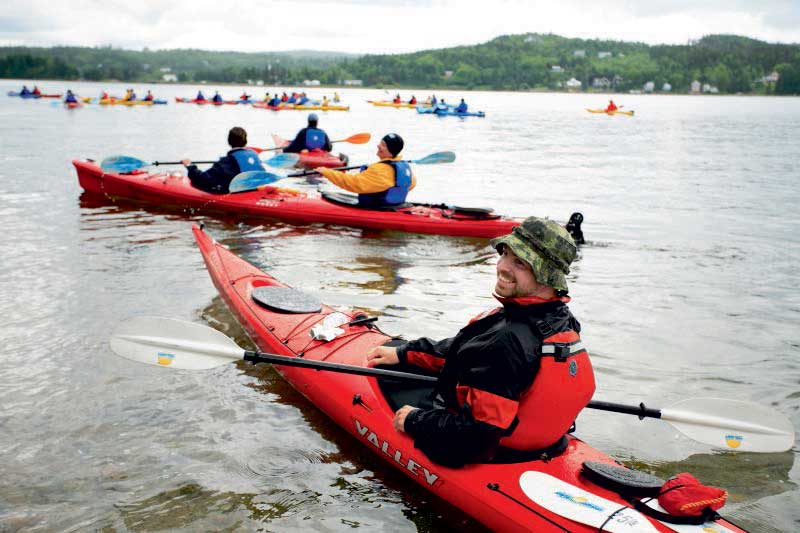
Scott Cunningham’s Coastal Adventures introduced me to ocean kayaking along Nova Scotia’s Eastern shore – roughly a 75-minute drive east of Halifax.
His half-day excursion merely whetted my appetite.
What’s cool?
Paddle among a scatter of islands where seals and osprey (fish hawks) are your companions.
I loved the rugged, glacially scoured coastline juxtaposed against sandy beaches. Multi-day trips with kayak-camping are possible.
Recommended tour: Three Sisters Sea Kayaking Day Tour
3- Big 5 Safari = Ecotourism Canada at it’s best
Riding Mountain National Park and Churchill, Manitoba
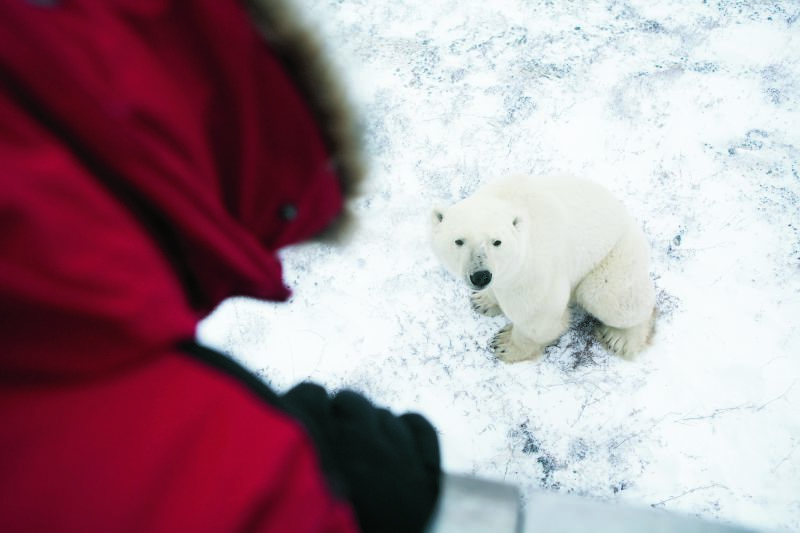
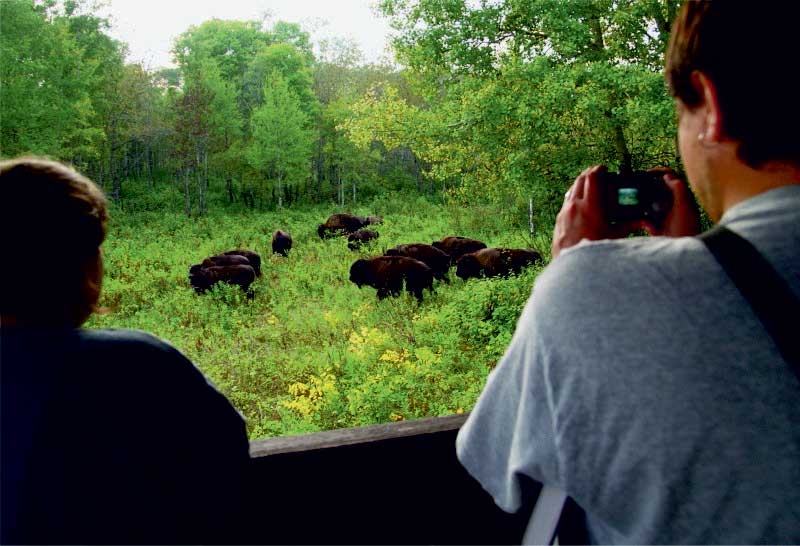
Join Frontiers North’s Big 5 Safari, where you’ll travel with expert guides to try to glimpse and photograph Canada’s most sought-after wildlife: polar and black bears, belugas, moose and bison!
What’s cool? This two-part trip sees you wildlife watching in Riding Mountain National Park, three hours northwest of Winnipeg, Manitoba.
Boasting a rich, varied habitat where Canada’s boreal forest merges with aspen parkland and prairie grassland, this gem of a park offers spectacular wildlife watching, including a herd of bison.
Then, fly to Churchill, in the North Country, where you can kayak among thousands of beluga whales and board a Tundra Buggy to search for polar bears.
Ecotoruism Canada tip? Take binoculars.
Insider’s tip? Be ready to see (and photograph) Aurora Borealis.
Recommended tour: Tundra Buggy Summer Day Tours
4- Recreational Geology Rocks
Ottawa Valley’s Bonnechere Caves
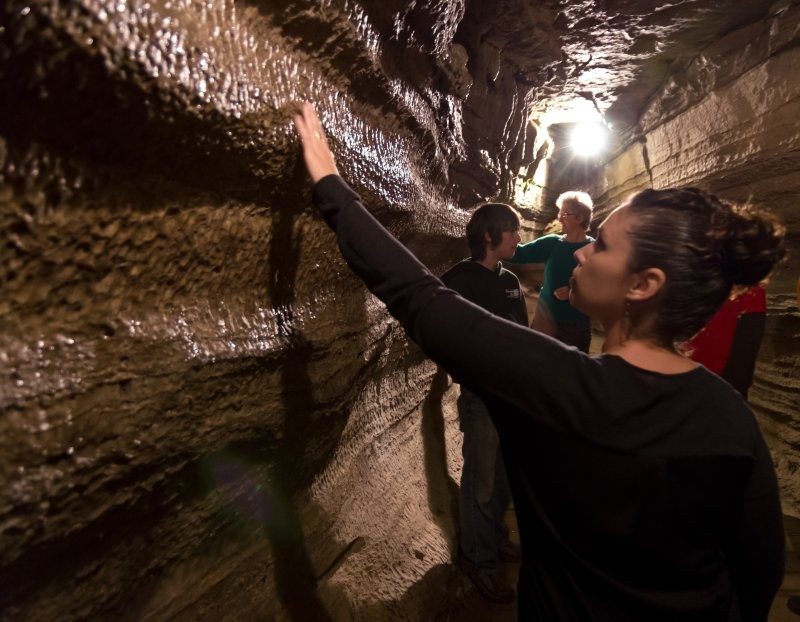
Return to the Ordovician Era, over 510 million years ago, when Earth was covered by seas. Learn about this ancient period in geological time with a guided tour of Bonnechere Cave, Ontario’s most extensive cave system in the province’s Ontario’s Highlands region.
What’s cool? The cave has many stalactites and stalagmites, as well as fossils such as cephalopods (resembling squid), gastropods (ancient snails), and crinoids (ancestors of modern-day sea urchins).
The cave’s subdued electric light system allows you to see these features as well as your way through the caves, so there’s no need for flashlights.
You may also find year-round residents in the caves, sleeping upside-down, hanging from the ceiling.
Ecotourism Canada tip: Ontario’s Highlands’ offers many more recreational geology outings including digging for crystals and visiting mineral museums. It’s one of Canada’s lesser-known ecotourism gems.
5- First Nations’ bison jump
Wanuskewin Heritage Park, Saskatchewan
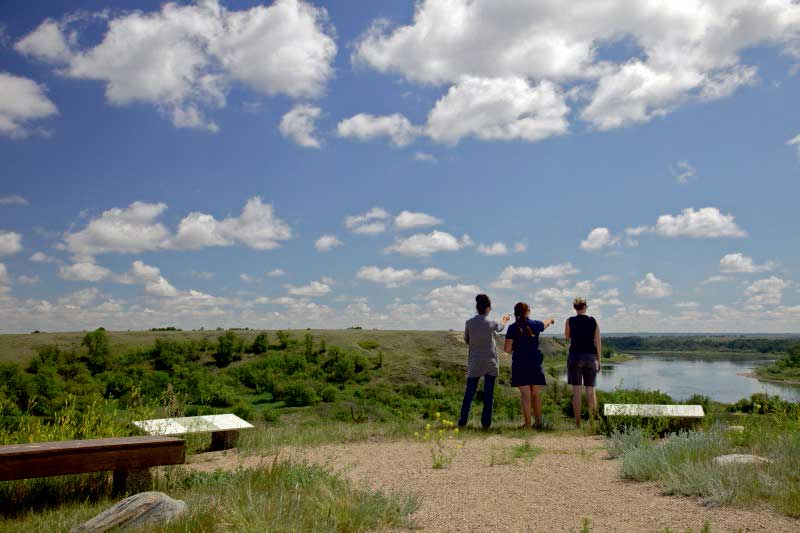
Bison were central to the political, spiritual and cultural life of First Nations people who lived on the plains.
Bison jumps were crucial because using this hunting technique, animals were stampeded over a cliff to their deaths, then processed for the coming year’s food, shelter and clothing.
Visit Wanuskewin, see the jump, learn about First Nations spiritual connection to both the land and bison. Here you’ll gain insight into why many nations have gathered here for more than 6,000 years.
What’s cool? Wanuskewin is home to 19 pre-Contact archaeological sites which reveal more about First Nations’ use of, and life in, this part of Saskatchewan’s grasslands.
Canada ecotourism tip? Don’t miss guided hikes, view of an archaeological dig (in progress if you’re lucky) plus an exceptional gift store featuring locally made First Nations’ art and crafts.
6- Alberta’s Cowboy Trail
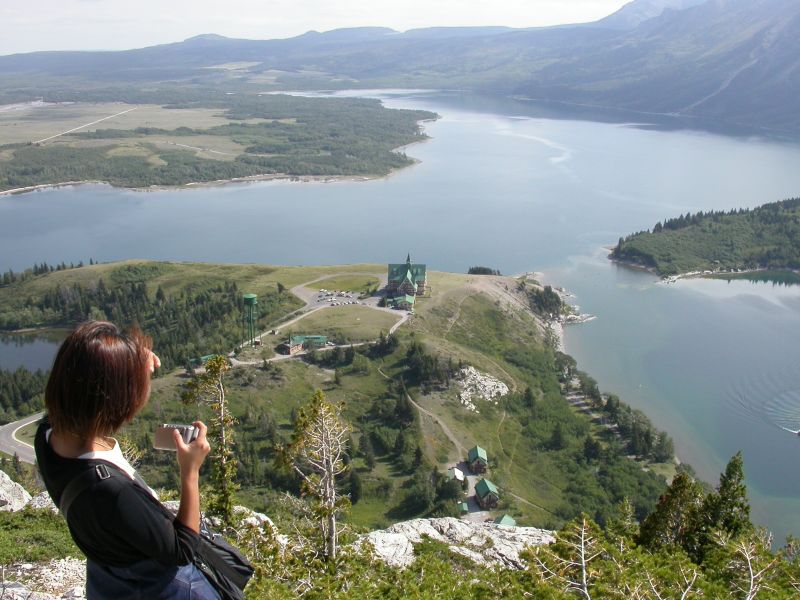
Driving the Cowboy Trail circuit provides insight into Alberta’s “Old West”.
You’ll head south of Calgary through grasslands and foothills immediately east of the Rocky Mountains, discovering villages such as Bragg Creek and Black Diamond. However, there’s a triptych of historical destinations to experience:
Bar U Ranch National Historic Site explains the history of ranching.
Take a horse-drawn wagon ride to visit different outbuildings and enjoy a “cowboy coffee” (coffee boiled in a pot over a campfire).
Listen to cowboy poets recite poems – something ranch hands really did compose and recite while herding cattle over the grasslands, for months on end.
Continue to Waterton Lakes National Park where you can overnight in a teepee (and hear storytelling with First Nation Elders), pitch a tent, or stay in the 1926-27 Prince of Wales Hotel, a National Historic Site.
Hike, mountain bike, canoe or horseback ride (with Alpine Stables), to experience flora and fauna of pine and aspen forests, alpine meadows and marshland habitats.
What’s cool? Next is Head-Smashed-In-Buffalo-Jump, a UNESCO World Heritage Site.
Such jumps were used by ancient peoples who stampeded herds of plains bison over cliffs, so they could then process the animals into food, clothing and tools.
Archaeological research indicates people were here 6,000 years ago, meaning this is one of the oldest jumps in the world.
All in all, the Cowboy Trail connects us to ancient peoples, the environment, and European settlement: making a fascinating tour!
Recommended tour: Cowboy Country Tour
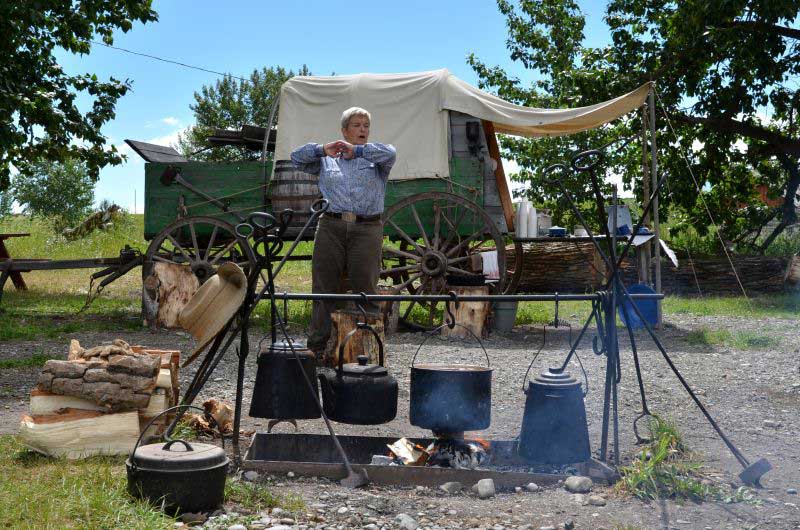
7- First Nations discoveries
Haida Gwaii, British Columbia
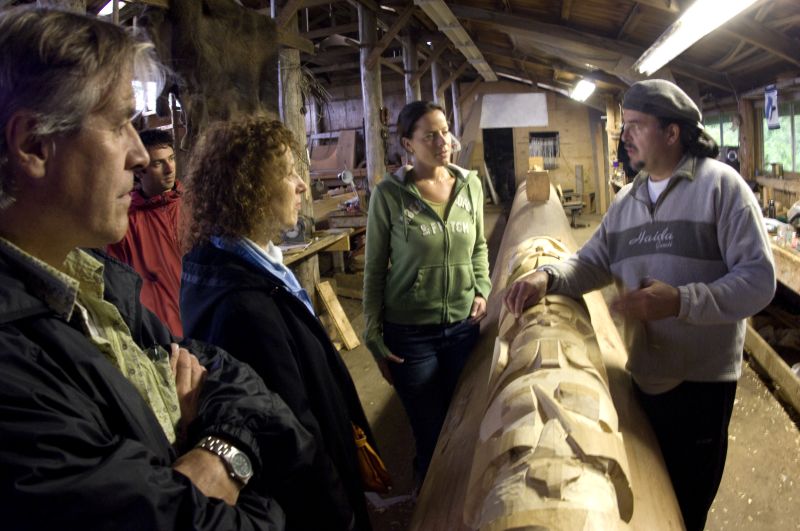
I love the paintings of Emily Carr, one of Canada’s most renowned painters who lived among First Nations and painted their villages, totem poles and way of life in the early 1900s.
Like her, I am intrigued with how First Nations lived – and still live – in rugged conditions such as British Columbia’s Haida Gwaii (used to be known as Queen Charlotte Islands).
My Canadian ecotourism travels have led me to explore the islands and touring a site Carr knew, called Skedans, with Moresby Explorers.
With them, I took a day’s boat trip to Louise Island and marvelled at seeing some of the exact totem poles she depicted.
What’s even more intriguing is that Haida Watchmen guard all the sacred sites, and interpret them to visitors.
Gwaii Haanas National Park Reserve and Haida Heritage Site operated by Parks Canada is part of Haida Gwaii.
Just getting there is an adventure: go by air from Victoria or Vancouver, or hop on a BC Ferry from Prince Rupert.
As you approach, Pacific Ocean mists may swirl about Haida Gwaii or you may be dazzled by a blue-sky ocean day’s sheer glory.
What’s cool? Camp or stay in cabins to explore marine life in ocean pools, go beachcombing, and more.
Recommended tour: Cultural Immersion & Holistic Wellbeing on Haida Gwaii
8- Muskwa-Kechika on horseback
Northern British Columbia
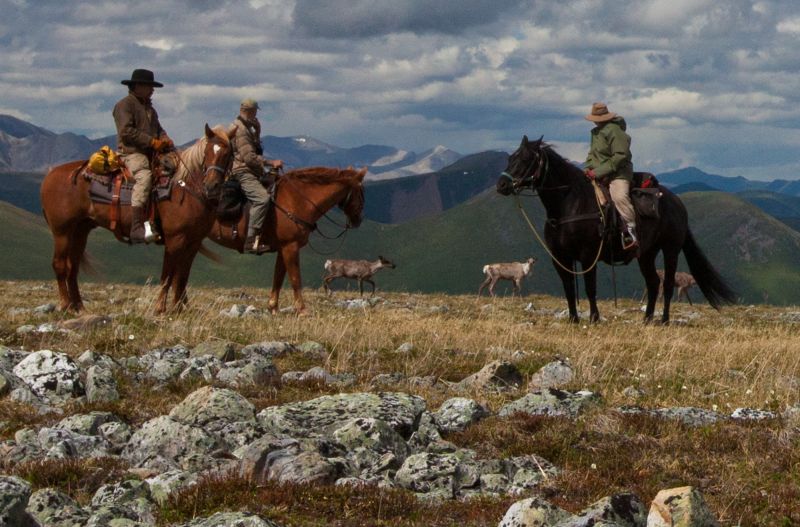
Eco travels on horseback in Northern British Columbia Photo: Wayne SawchukAuthentic wilderness backcountry that’s accessible (albeit challenging to get to) is hard to come by, even in Canada.
Enter Northern BC’s Muskwa-Kechika Management Area, a 6.4 million hectare tract of land that’s about the size of Ireland.
This is an extremely special region in Canada, where resource extraction is highly monitored, with environmental protection being paramount.
It’s a fabulous destination for those wanting to experience responsible tourism in Canada.
How to best explore its sweeps of mountain ranges, broad valleys, and wild rivers? How best to photograph wildlife you may discover, such as grizzly or black bears, moose, elk, wolverine, wolves, Stone’s sheep and more?
Ride on horseback treks of up to 12 days with environmentalist, photographer and outfitter Wayne Sawchuk, owner-operator of Muskwa-Kechika Adventures.
He’s been leading trips throughout the summer for years, so knows the territory inside out. What’s key is participants must be fit and able to help catch and saddle their horses, through to pitching their tents and helping to cook at least one campfire dinner.
Sound like fun? It is. Sawchuk leads exhilarating rides that are somewhat demanding but spectacularly rewarding.
What’s cool? As you travel, he explains the geology, flora, fauna and First Nations culture. What’s not to love?
9- Canadian ecotourism adventure to the “The Rock”
Newfoundland’s Gros Morne National Park
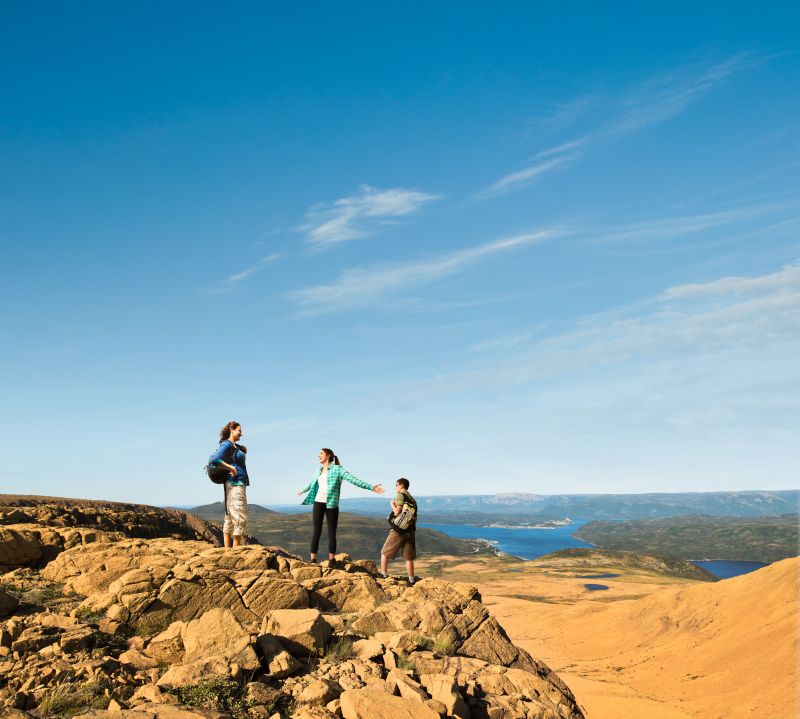
Hiking Newfoundland’s Gros Morne National Park is to walk amid elemental nature.
Think glacier-scoured rocks, deep-water fjords with plunging cliff sides and breathtaking ocean views. All these and more await.
The “more” includes spectacular geological features which reveal the Precambrian era of 1,200 million years ago.
With park interpreters, learn about plate tectonics, and find geological formations such as diabase dykes (such as at Western Brook Pond’s cliffs).
What’s cool? While hiking and camping here, you are exposed to the elements, just as my husband Eric and I were when we ventured to Gros Morne.
We were almost “swept away” by drenching rain and winds, however, another day shone brightly, and so just “wait five minutes” as the locals say, for a change in the maritime weather.
10- Highest Tides in the world
Fundy National Park and Biosphere Reserve, New Brunswick
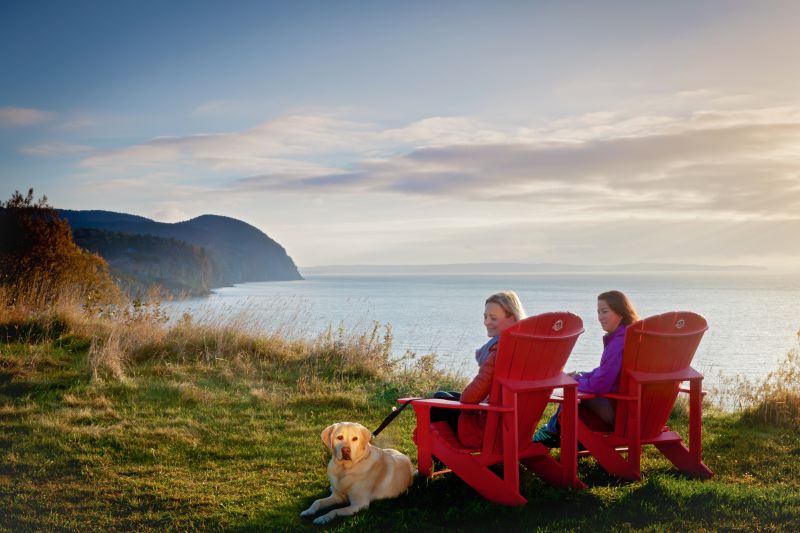
Imagine ocean kayaking a shoreline of red sandstone cliffs and then, in low tide, walking on the exposed ocean floor. This is simply “situation normal” at New Brunswick’s Bay of Fundy, home to the highest tides in the world.
How do the tides work? According to Parks Canada’s website, visit a few days in a row and you’ll notice the water is at its highest and lowest about an hour later each day.
The tides work on a ‘lunar’ or moon day, which is 24 hours and 52 minutes long. As the earth turns on its axis, the moon orbits in the same direction around the earth.
It takes one day and 52 minutes for a point on the earth to reappear directly beneath the moon.
Recommended tour: Best of Hopewell Rocks & Fundy National Park from Moncton
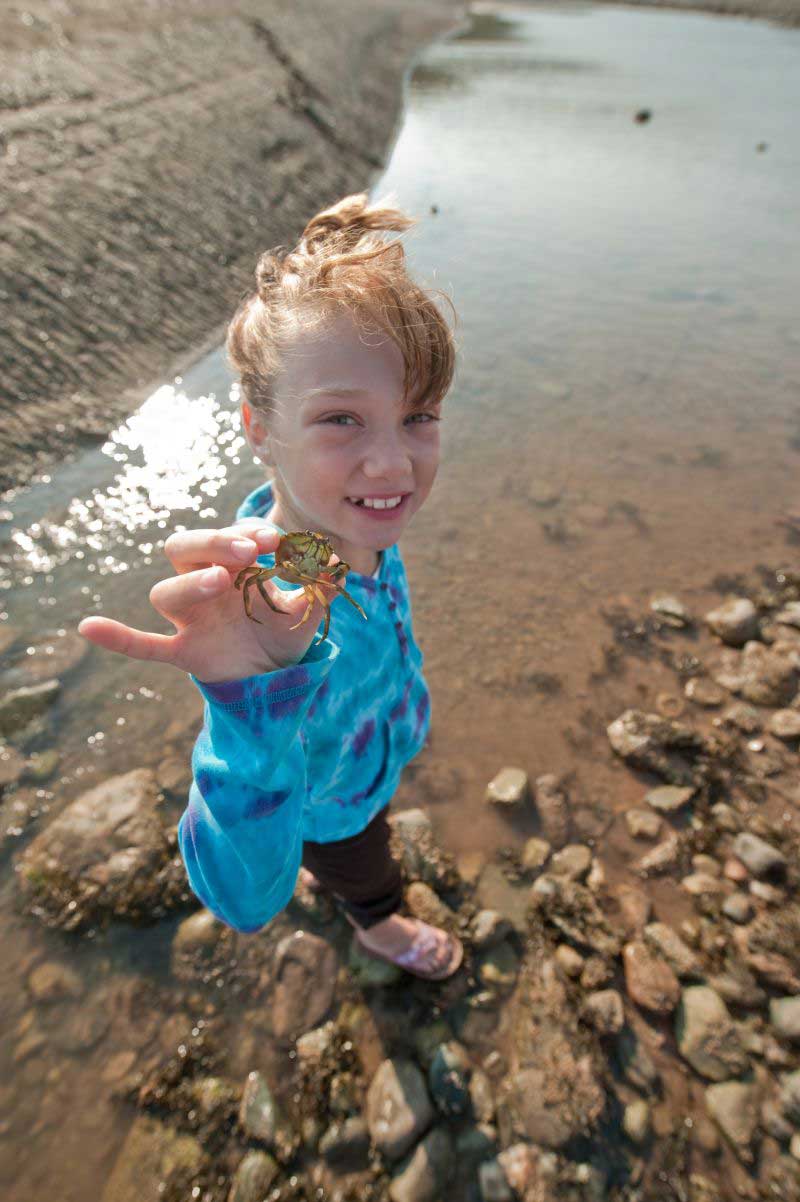
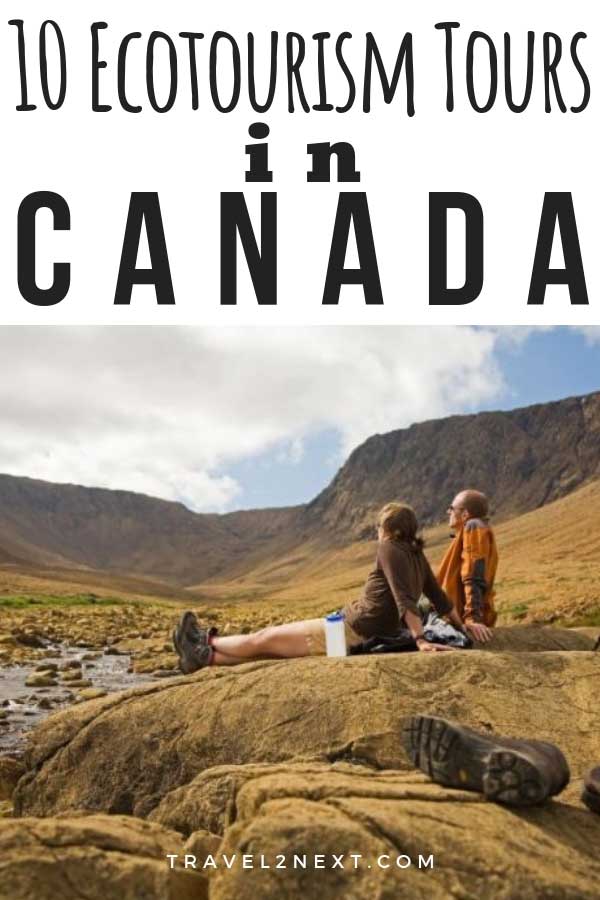
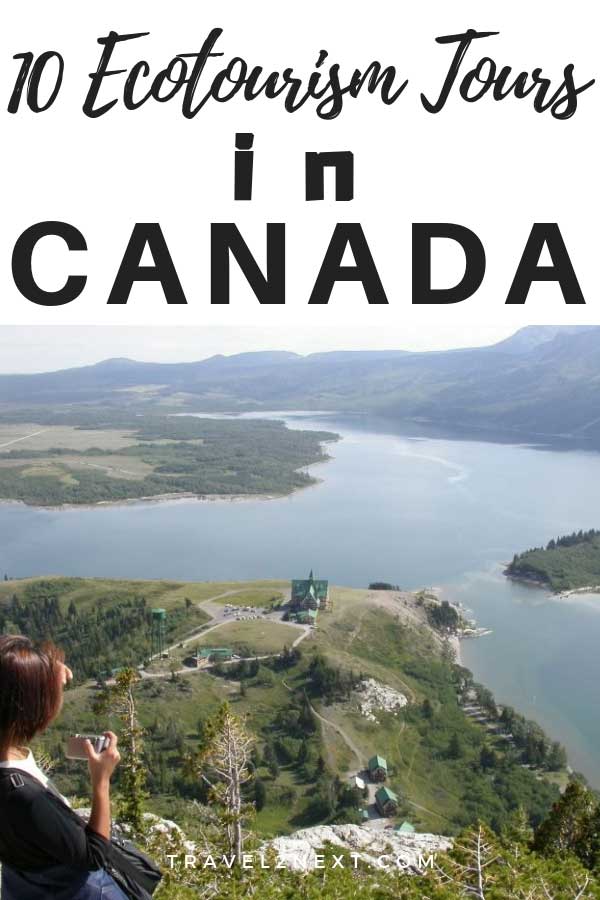
Plan Your Trip

Rent A Car – Find the best car rental rates at Discover Cars. They compare car hire companies to provide you with the best deal right now.

Find A Hotel – If you’re curious about this article and are looking for somewhere to stay, take a look at these amazing hotels.

